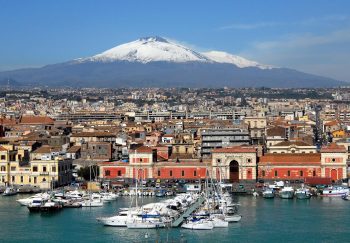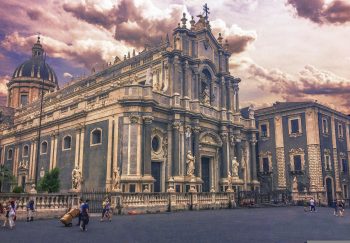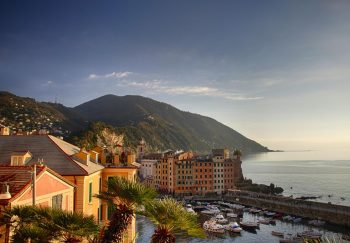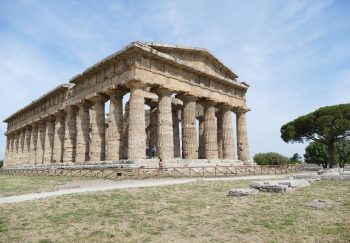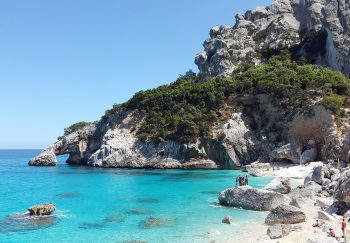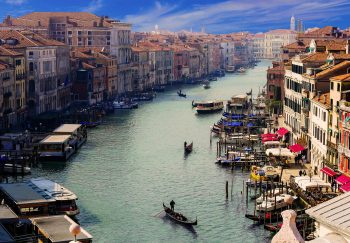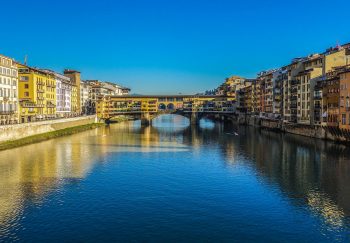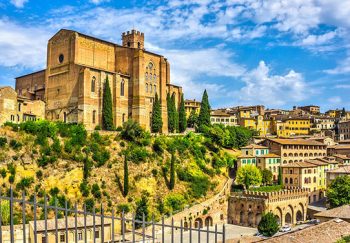Leonardo da Vinci, an Italian Renaissance man, was a painter, writer, and inventor. The idea of the Renaissance man was actually born during his lifetime. His brilliance, as one of the greatest intellects in world history, is preserved today in art, statues, and notebooks throughout Italy and elsewhere.
Da Vinci is still a mystery despite his fame. His biographical information is scanty and he didn’t leave many finished works. We know a lot about him, and it paints a picture that he was a genius. He was one of the most prolific minds of his time, but not always the most focused. We will never know everything about Leonardo da Vinci. But here are some of the most interesting facts we do know.
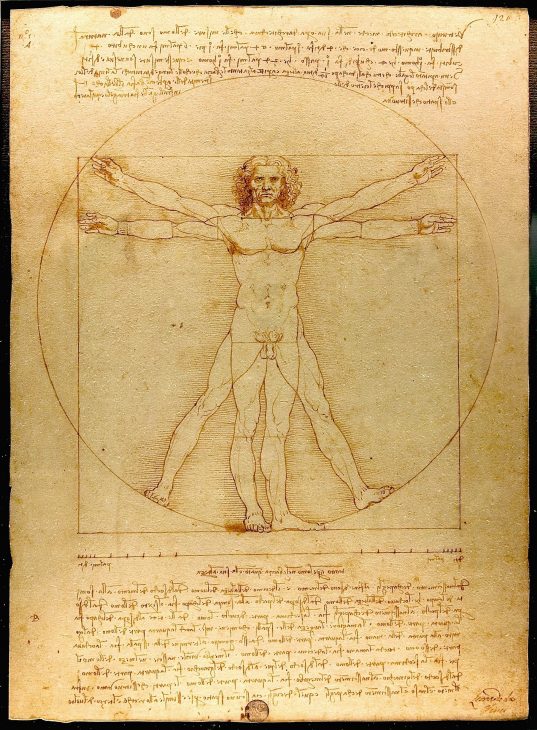
Although da Vinci was born as a “nobody”, his talent was evident from the beginning.
Leonardo da Vinci was an illegitimate son. His father, a well-respected lawyer, and his mother, an ordinary peasant from the same village, never got married. The reasons for this are still a bit unclear. However, the boy ended up moving in with his father. Leonardo did not receive the classical education in Greek, Latin, and higher mathematics that was common for high-born boys his age.
Despite his handicaps, he displayed artistic talent and was sent to Florence as a teenager to be an apprentice to the Florentine painter Andrea del Verrocchio. He quickly outperformed his master’s talent.
Verrocchio’s 1475 masterpiece, The Baptism of Christ (or the Baptism of Christ), was completed with the assistance of da Vinci. He painted the background and most likely the young angel wearing Jesus’ robe. Popular legend says that Verrocchio was inspired by da Vinci’s talents and vowed never to paint again. However, this is a rumor that has never been confirmed.
Although the Baptism of Christ is officially attributed Verrocchio’s, it shows da Vinci’s official entry into the art world. It can be seen in Florence’s Uffizi Gallery.
Da Vinci is known for not finishing his work.
His many interests kept him distracted and his perfectionist tendencies discouraged him from declaring a painting finished. Da Vinci is often accused of being a procrastinator who doesn’t want to start work. The problem was not that he didn’t, but that he was always starting new works and neglecting to complete the ones that he had started.
Some of these unfinished masterpieces are housed in the Uffizi, which also houses two of Verocchio’s first paintings: The Annunciation (with Verocchio) and The Adoration for the Magi (with Verocchio). The first was painted in 1472. It has been housed in Uffizi since 1867. The second was completed in 1481. It has been in Uffizi ever since 1670.
These aren’t all the works that the artist never finished. This list includes St. Jerome with the Wilderness in Vatican City and the Virgin and Child in the Louvre in Paris. Even the great Mona Lisa is an example of da Vinci masterpieces that were never officially declared complete by the artist.
Leonardo seemed to be unhappy with his work, and was unable to stop himself from making small adjustments to his paintings even after they were likely “complete”.
He was also a slow worker.
If he had kept a more rapid pace, Da Vinci could have been able to get away with not finishing some works. Van Gogh was able to paint more than 2000 works during his lifetime. Da Vinci spent over three years on the Last Supper, and more than five on the Mona Lisa. The Adoration to the Magi took three more years and is still unfinished.
Da Vinci performed more cadaver dissections than any other contemporary doctor
Da Vinci’s realistic portrayal of the human body is due to the fact that the artist spent his time dissecting human bodies. Da Vinci was an early pioneer in the study of human anatomy in Europe, in an age when medical knowledge was very limited. He is still considered to be one of the pioneers of the study.
Another unfinished masterpiece, St. Jerome in The Wilderness, shows da Vinci’s extensive knowledge of human anatomy. It hangs in the Vatican Museums and shows Saint Jerome kneeling beneath a cross. The hermetic saint is seated on a rock and the tamed Lion at his feet. The incredible detail in St. Jerome’s neck and bulging tendons and muscles on his shoulders are a sign of da Vinci’s growing obsession with anatomy and close observation of human physiology. It is likely that he had already started to study the human body via secret dissections.
The artist probably had to start dissecting in secret. Although dissection was not technically illegal, Leonardo struggled to obtain bodies. As his reputation grew, it became easier for him to obtain cadavers. Leonardo is said to have done more than 30 dissections by 1517 da Vinci.
His most famous sketch of human anatomy is hidden away, making it extremely difficult to see.
Many notebooks were filled with da Vinci’s thoughts, equations, and illustrations. The Vitruvian man, a study of classical proportions, is perhaps the most well-known of these sketches. The sketch was drawn in his notebook da Vinci around 1490. It was used as a way for him to contemplate the “ideal” proportions for human beings suggested by Vitruvius, an ancient Roman architect. This drawing is now synonymous with the Renaissance man, a person who is perfectly proportioned to the world around him.
Although many people have seen reprints and recreations of the sketch, the original Vitruvian Man seldom sees the light. It is currently kept in Venice’s Gallerie dell’Accademia, but it is too fragile to be displayed permanently. It is only displayed on special occasions these days. In 2013, the Vitruvian Man was displayed in an exhibition for the first time in thirty years.
Some of the creation of The Last Supper is due to a sodomy accusation against Da Vinci.

Many scholars believe that da Vinci was homosexual because of his tendency to surround himself with young men. Others believe that he was bisexual. Sigmund Freud published a 1910 essay that concluded that da Vinci was homosexual, but that he had sublimated his sexual desires into art and research. He was accused of sodomy in 1476, regardless of the facts. Although the charges were dropped against him, the case scared him. Sodomy was a crime that could lead to death in Renaissance Florence. He fled Florence for Milan. He worked as an engineer and painter for the Sforza family, as well as a party planner and sculptor.
His Milan masterpiece should have been the largest ever equestrian statue, in honor Francesco Sforza, the Duke. He only managed to create a clay model of 24 feet before being stopped by a series of wars that saw the bronze he was allocated for cannon balls by Milanese and the model used as target practice for French soldiers. He did manage to finish the Last Supper, which is undoubtedly the most famous fresco in the world. The fresco, which was located on the cafeteria wall at the Dominican convent that is attached to Santa Maria delle Grazie (Milan), was deemed a masterpiece. However, it also had its problems. First, da Vinci’s slow process meant that a standard quick-drying fresco technique in which paint is applied to plaster while it is still wet would not work. The ever-experimental artist came up with a new technique that allowed him to paint directly onto drywall.
In one important aspect, The Last Supper was a failure.
Secco, or “dry”, was Da Vinci’s new technique. It looked great and was better suited for his slower pace but it was not made to last. Problem was that the paint did not bond to the wall as well as it would if it was painted onto wet plaster. The Last Supper started to deteriorate almost instantly. The painting has been damaged by a number of acts of God over the years. The bottom of the painting was damaged when a door was placed in the middle of it. Also, the wall narrowly escaped destruction after a WWII bomb exploded almost all of Santa Maria delle Grazie including the cafeteria.
The painting is now restored and the room is kept at the right temperature to prevent further damage. Only 25 people can view the fresco within 15 minutes. However, the paint is still in a state of deterioration. You should see it as soon and reserve your tickets well in advance.
Da Vinci probably saw himself as an inventor first and foremost
Although we think of da Vinci often as a painter. However, he only created about 20 paintings during his lifetime which is why they are so beloved and highly valued. Da Vinci may have been most comfortable in his roles as an engineer and inventor.
Internecine warfare in the Renaissance meant that there was a great need for military engineers. Da Vinci was fortunate to be offered a job with Sforza. He was allowed to sculpt and paint while he worked for them. This was his 17-year tenure as the Duke’s military engineer.
Da Vinci believed there was no separation between science and art. His wide-ranging skills enabled him to develop new ideas and draw them well enough for blueprints that could be used for many generations.
The National Science and Technology Museum Leonardo da Vinci in Milan houses modern-day models of some of these antique machines. The museum is dedicated to Leonardo da Vinci as a “symbol of the continuity between scientific-technological and artistic culture.”
The original collection consisted of models that were reconstructed from da Vinci’s drawings of different machines. Today, the collection includes multiple interactive exhibits that allow guests to interact with the da Vinci inventions. Videos and 130 models from his inventions are also on display, including early tanks and water-going vehicles as well as flying machines. The museum reveals the true passions of the artist: engineering and invention.
The Mona Lisa is perhaps da Vinci’s most mysterious piece.
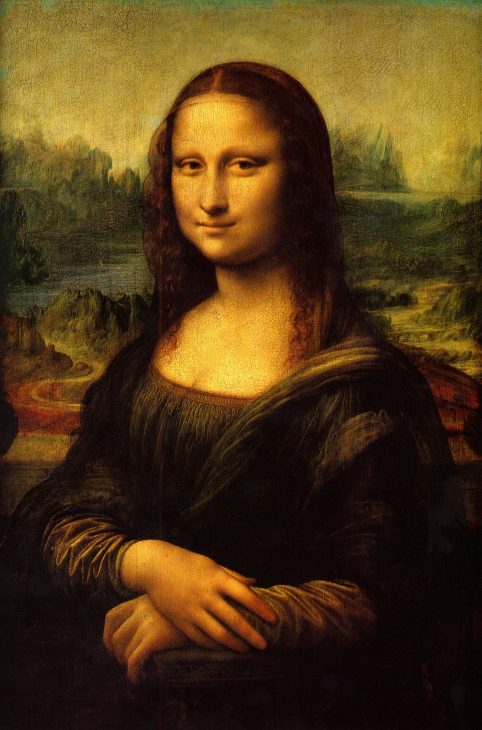
It is not the only place where Leonardo da Vinci’s masterpieces can be found. The Mona Lisa or La Gioconda, as it is known in Italian, is preserved in the Louvre museum in Paris, France.
After Francis I granted the title of “Premier Painter, Engineer, and Architect to King”, the Mona Lisa was created in Italy. However, it was completed on French soil. He was able to enjoy a leisurely life in a large country house. However, it is said that the artist never liked being away from Italy. He died in Clos-Luce in France at the age of 67, despite all his doubts.
There are many myths, legends, and rumors about the Mona Lisa. Some say that da Vinci was asleep with the subject of the portrait and that her smile is due to pregnancy. Others claim that da Vinci modeled the Mona Lisa after him. The rumors are difficult to disprove or prove. The fact that the artist kept the finished painting with him is proof of this. He continued to add details and brushstrokes throughout his life.
It is the most popular work in Leonardo da Vinci’s amazing portfolio, regardless of whether it was his favorite or not.


